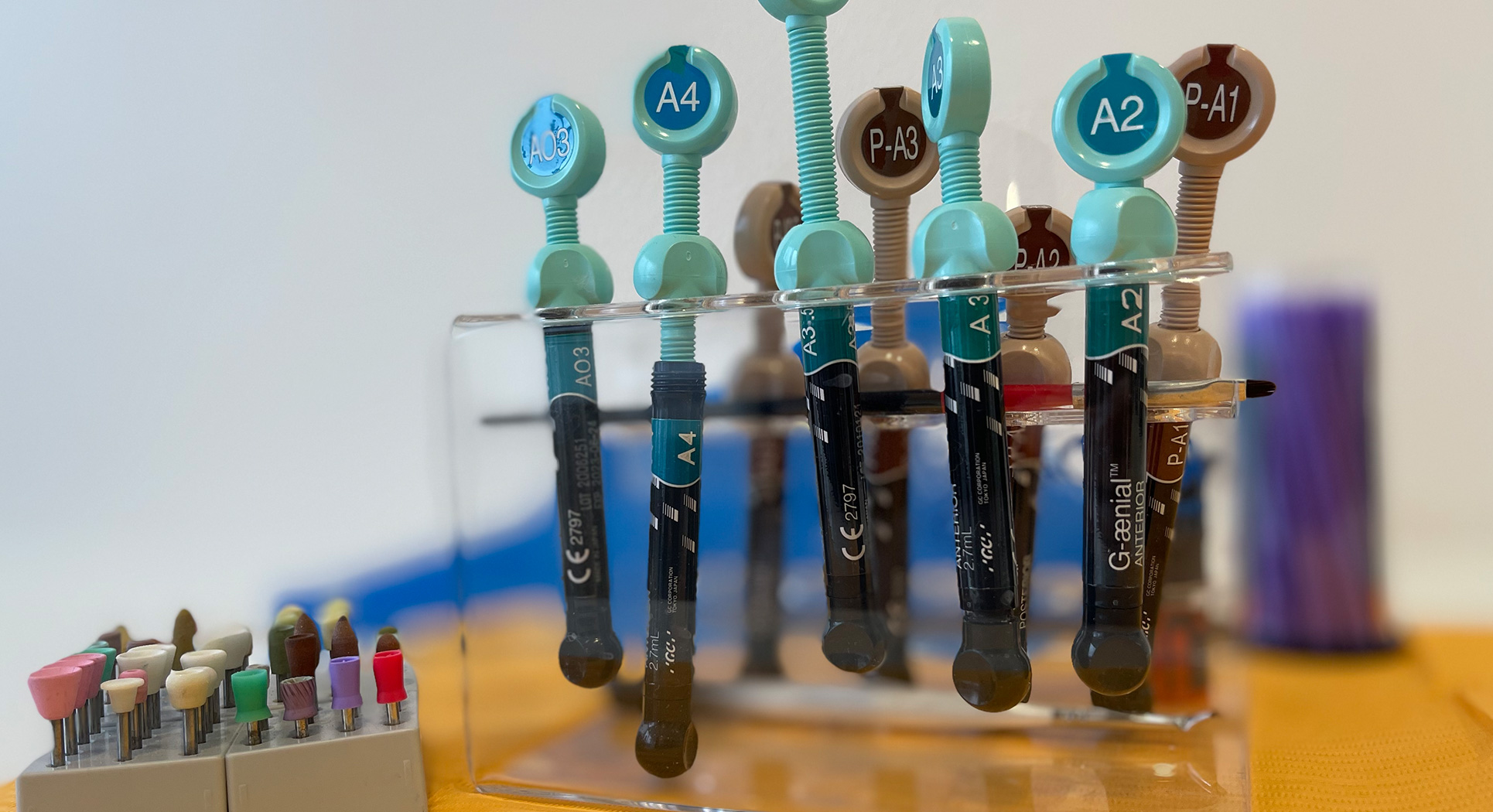Restorative Dentistry

Restorative dentistry focuses on rebuilding teeth damaged by decay, mechanical trauma, or developmental disorders. Aesthetic dentistry aims to restore the natural or desired shape and color of teeth. These two terms are often used interchangeably.
Tooth decay is a bacterial disease that develops due to poor oral hygiene and a diet rich in high-sugar products. If left untreated, it can lead to fractures in the hard tissues of the teeth, pulp disease, inflammation of periapical tissues, and, in the long run, even heart, kidney, and joint diseases.
Non-caries damage, on the other hand, can occur as a result of trauma, parafunctions (harmful habits), acid-rich diets, certain systemic diseases (bulimia, reflux), occlusal disorders, or improper brushing techniques.
Tooth reconstructions are usually performed under local anesthesia, making the procedure completely painless. The use of highly aesthetic, modern materials ensures a perfect match between the restoration and the patient’s tooth color or, if necessary, allows for its alteration.
The filling should not only restore the tooth's proper aesthetics in terms of shape and color but also regain its function by reconstructing its anatomy.
Achieving this effect is primarily possible thanks to the knowledge and manual skills of the dentist performing the procedure.
Main Tasks
- Reconstruction of teeth affected by caries
Caries most commonly develops in the grooves of the chewing surfaces of posterior teeth, on interproximal surfaces, and in the cervical region. Treatment involves removing the diseased portion of the tooth tissue and restoring it, most often using composite materials.
- Reconstruction of mechanically damaged teeth and closing diastemas
Some structural anomalies of tooth crowns, such as conical teeth, have a genetic basis. This condition typically affects the lateral incisors of the maxilla, which are smaller than usual and have a triangular crown.
A diastema is a noticeable gap between the central incisors that some patients find aesthetically unappealing. It can be closed using composite materials, ceramic veneers, or orthodontic treatment. - Removal of discoloration
Tooth color is an individual trait, but discoloration can result from external factors (such as smoking, drinking coffee, and consuming staining foods) and internal factors (such as excessive fluoride intake or certain antibiotics during tooth development).
Teeth whitening is a procedure that can lighten the natural color of teeth. The treatment can be performed in a dental office or at home but always after prior consultation with a dentist, who will assess the oral health condition. Before the procedure, a dental hygienist must clean the teeth of plaque and tartar. The most common method is tray-based whitening, which usually lasts about two weeks. It involves the use of custom-made trays filled with a whitening gel with a concentration of the active ingredient determined by the dentist.
For teeth that have undergone root canal treatment, whitening must be performed by a dentist in a clinical setting, as the whitening agent needs to be applied directly inside the tooth.
